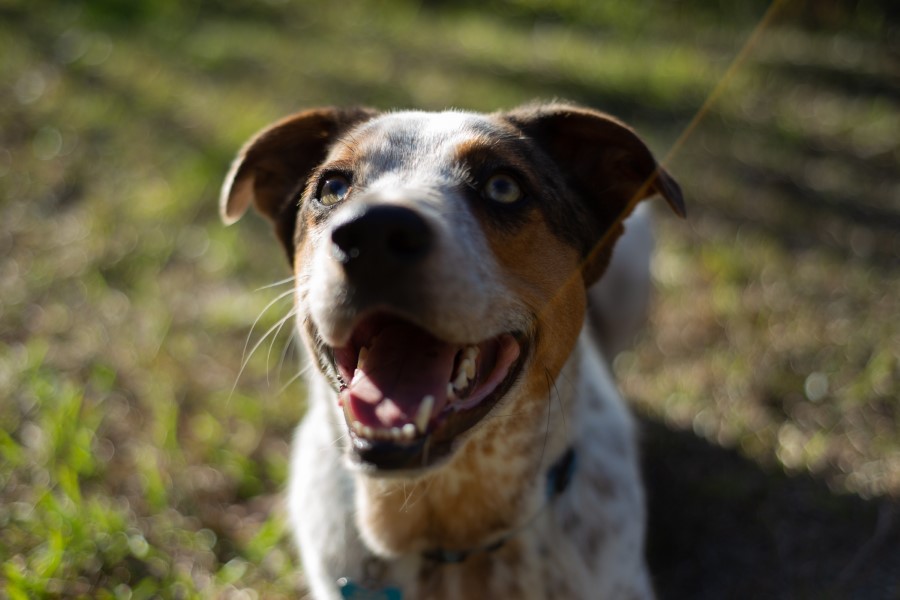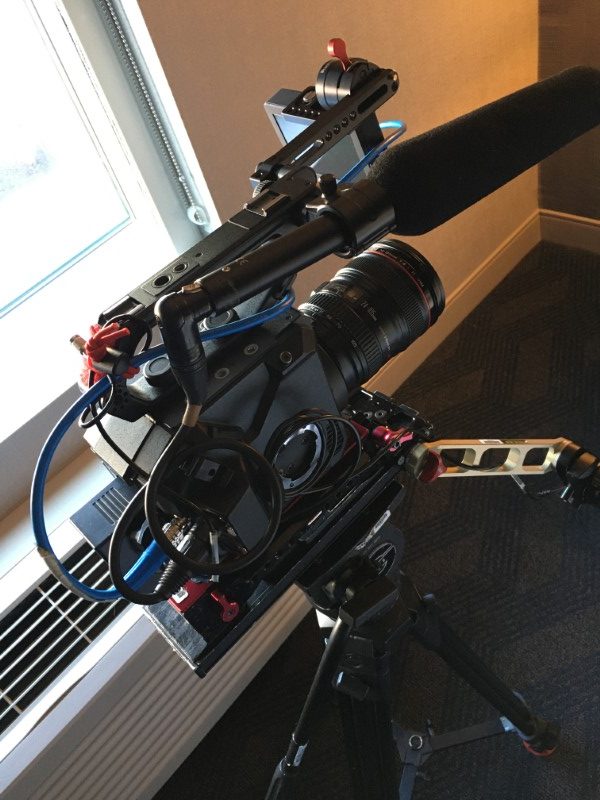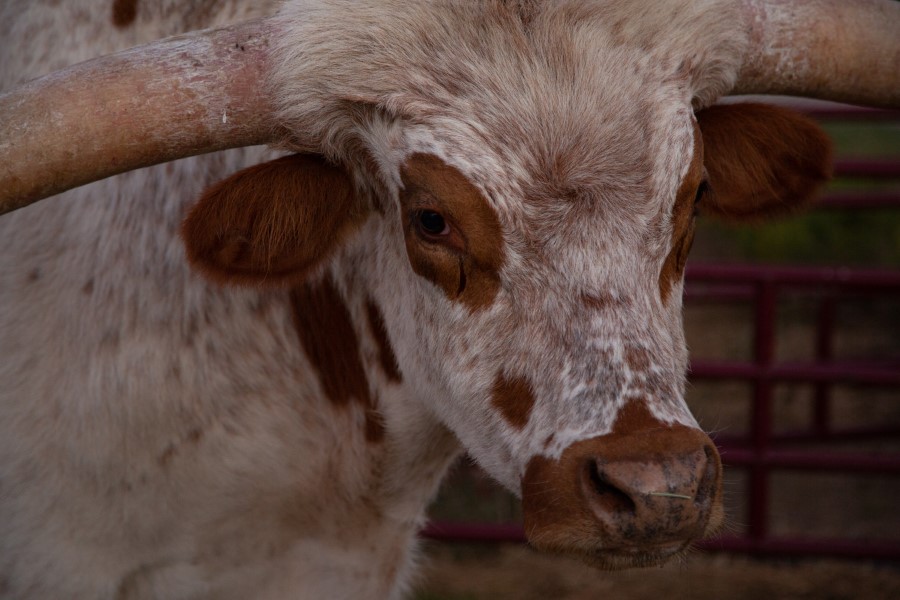DISCLOSURE: AS AN AMAZON ASSOCIATE I EARN FROM QUALIFYING PURCHASES. READ THE FULL DISCLOSURE FOR MORE INFO. ALL AFFILIATE LINKS ARE MARKED #ad
Top Photo: Rachel Bardin
As a photographer turned cinematographer, I have owned the Canon L Series 24-105 EF IS since 2013. It came bundled with a 5D Mark iii, which I primarily use for stills.
In the past, I might have balked at using this slow, f4, zoom lens in filming situations and opted for faster cine primes. But as my work in documentary has grown, I’ve truly come to appreciate this workhorse lens.
I am not alone. In a field where 82% of productions utilize zooms, the 24-105 is the number 1 zoom lens of choice according to the International Documentary Association’s 2019 Equipment Survey.
While cine primes are beloved by most cinematographers, why are so many choosing this lens which was designed for still photography? For me, this lens lands in a sweet spot of features, image quality and price which I’ll break down below.
1. The image stabilization
When doing handheld in scenarios that do not allow for stabilizers like gimbals or Steadicam, the IS feature of this lens makes an enormous difference. It’s a truly fantastic technology that has become crucial to my handheld work, particularly when following subjects on foot.
IS has well-documented limits (it’s less useful with mechanical vibrations from vehicles) but for documentary run-and-gun scenarios, it makes an enormous difference.
The Canon 24-70 is also a popular option for similar productions because of its f2.8 rating but it sacrifices a large range of coverage (71-105) and lacks the image stabilization of the 24-105.
2. The range

In fast-paced documentary scenarios or productions with budget constraints, there is often no assistant and very little time to swing lenses.
Camera operators need to cover a scene in a variety of ways. They must quickly get inserts, cutaways, and different angles so that the editor has options and can build a scene.
Being able to go from a modestly wide 24mm to a tight 105 covers a lot of ground and reduces the number of times lens changes are needed. To get a bigger coverage range in the Canon line-up, consider the Cine-Servo 17-120mm (which costs way more!).
3. The size

This lens is fairly small and that is incredibly useful in specific scenarios. When you want documentary subjects to feel at ease and not like there is an enormous Hollywood production following them around, a modest camera build is really helpful.
Not only that, but a smaller build may attract less attention from passersby and authorities if you are filming in a restricted area. It also allows nimbleness and the ability to quickly get into tight spaces like cars when there is no time to rebuild or swing a lens.
To compare:
- The newest version of the Canon EF 24-105 weighs 1.75 lbs / 795g and is 4.65” / 11.8cm long.
- The Canon CN-E Compact-Servo Cinema Zoom 18-80mm is 2.6 lb/1.2 kg and 7.2” / 18.23 cm long.
- The Canon Cine-Servo 17-120mm weighs 6.4 lbs / 2.9 kg and 10” / 255mm long
4. The image

Much of lens selection has to do with personal taste and production needs. I find this lens to be fairly neutral and clean without being clinical.
If you watch documentaries, you’ve probably seen tons of projects shot with these lenses. While it doesn’t have all the character of something like a vintage lens, it’s a reliable image that has a pleasing flare and bokeh.
At certain ranges, it does have mild distortion and vignetting and the f4 rating is not a t-stop rating so there are slight differences in exposure when zoomed all the way in versus at the wider angles.
5. Full frame coverage

Photo: Rachel Bardin
Many of the excellent cine zooms outshine the 24-105 in many other areas. They are par-focal, have gradual irises rather than hard stops, and have built-in servo motors.
Yet many of these lenses can only cover a super 35 sensor. With the rising popularity of full-frame sensors, this humble photography lens was designed to cover 35mm still film which is significantly larger than the super 35 motion picture format and corresponding s35 digital sensors.
6. Longevity

Photo: Rachel Bardin
Popular camera wisdom advises “Invest in glass”. While not every piece of glass is a great long term investment, given how certain looks go in and out of fashion or are only suitable for particular projects, this lens has been a great buy.
I’ve had the Canon 24-105mm for 7 years and shot countless projects with it and I don’t anticipate selling it anytime soon.
There are many great cameras with EF mounts or EF mount options, not just from Canon but also Red and Panasonic among others. E-mount is easily adapted to using accessories like the Metabones Speedbooster so Canon glass is frequently seen on Sony cameras as well.
Conclusion
Originally introduced in 2005, the Canon 24-105 EF is still going strong.
These lenses have a great image, are well-built and have modest weatherproofing. If you take good care of this lens, you will have it for a long time.
With an updated version II and now Canon’s new RF mount version, we will likely be seeing this lens and iterations of it continue to be reliable standards for filmmakers in documentary and beyond.
Check the current price on Adorama
Check the current price on Amazon
What is your workhorse lens?


I used the 24-105 on my C100 to shoot an entire wedding day and the results turned to be amazing. Originally it came with my 5Dii but I needed continuous video so I got a C100. I never went above f/4 and was able to zoom in and out for different shots without having to change aperture. Even when the couple was cutting the cake in a dimly lit room, although it’s got light grain, the lens still did an amazing job when paired with that camera. Wish I hadn’t sold it now that I’m reading this but I did pick up a Sigma 24-70 f/2.8 with OS so I will have to see if it’s as good at stabilizing as the Canon 24-105 f/4.
Sigma makes amazing lenses as well – a bit sharper maybe and with a slightly different color. I doubt you won’t be satisfied. But you can always buy a used Canon 24-105 f/4 and have both in your arsenal 🙂
Did I say Sigma? Probably because most of my glass is that, but what I mean was Tamron. I got the 24-70 f/2.8 G2 with vibration compensation aka image stabilization. Haven’t tried it out on the C100 quite yet, Covid has kept my camera in it’s case unfortunately. From the test photos I have taken with the lens I can definitely say it’s sharper than the Canon 24-105 L and probably comparable to the Sigma 24-70 Art.
Ahh, ok. I see.
Sorry to hear about the loss of work. We’re all struggling here, as is a lot of other businesses. I keep my fingers crossed that the scientists will have a vaccine ready soon.